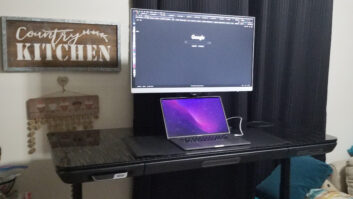SCOTTSDALE, ARIZ. -DSL broadband Internet access will overtake cable modems by 2002 and in the following two years become the technology of choice among consumers, according to a report by Cahners In-Stat Group.
The study by In-Stat’s ISP analyst Daryl Schoolar forecasts that 73 percent of all broadband access will go through DSL modems by 2004, leaving cable modems with the remainder.
In citing several reasons for this turnaround, Schoolar said DSL will offer a wider array of ISP choices; the various companies supporting DSL are finally starting to concentrate their efforts on marketing it to consumers; and neighborhood telephone lines are being upgraded to handle the service.
The one wild card in the deck is satellite-based broadband, he said, noting that Hughes and the Dish Network are expected to roll out services in the next few months that will operate through their popular direct-broadcast satellite.
Hughes’ DirecPC service that has been available for several years has had almost no impact on the market, but with a huge installed base of DBS dishes could give these new services a boost, said Schoolar. “These will definitely impact the broadband market, but there is not enough data [right now] to know by how much.”
About 9 percent of all homes with access to the Internet, or about 5 million homes nationwide, now have broadband service. In-Stat is projecting this figure to grow 77 percent by 2004 with revenue from these two services growing to $13.3 billion, up from $1 billion in 1999.
Consumers with home networks are driving broadband adoption now, In-Stat reported, but applications such as streaming video, which require a huge amount of bandwidth to work properly, will attract people in the future.
“The biggest broadband consumer application is home networking, with 33 percent of broadband users using that function,” said Schoolar.
In-Stat’s research found that 65 percent of broadband owners are 25 to 44 years old, and 40 percent are single with an annual income of $50,000 or more.













